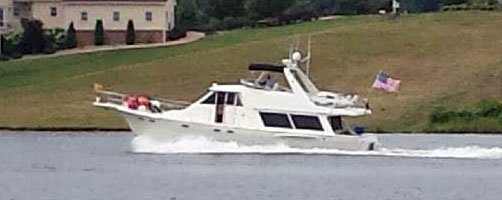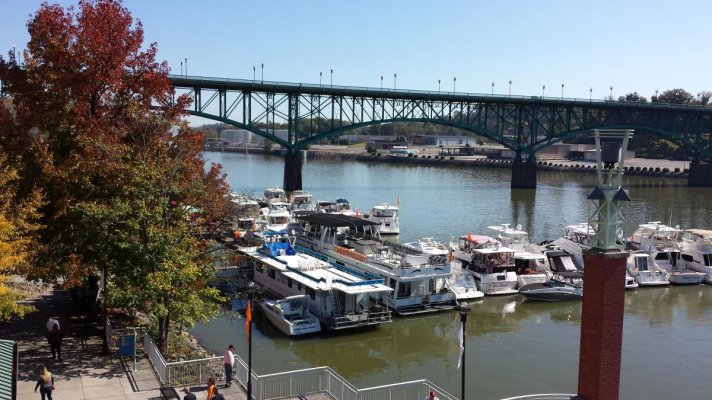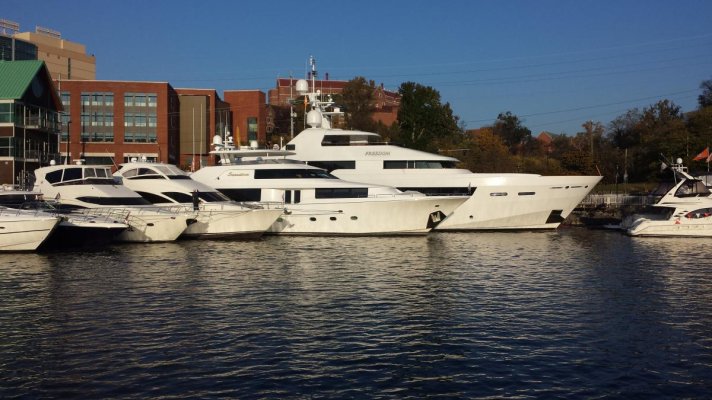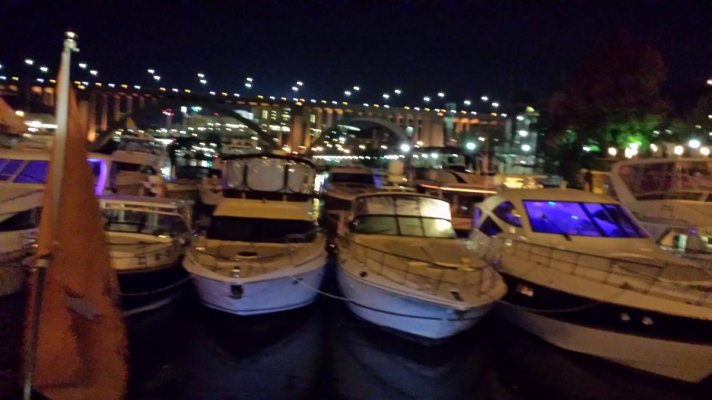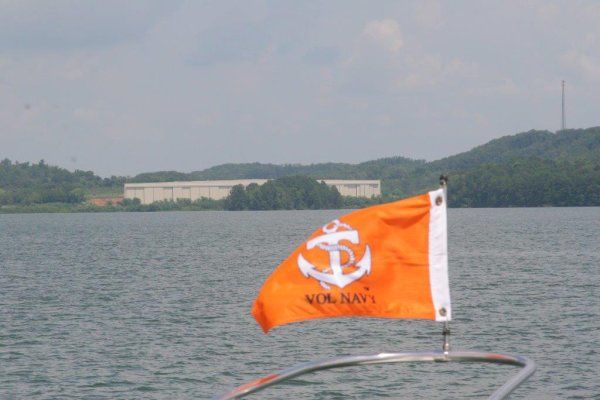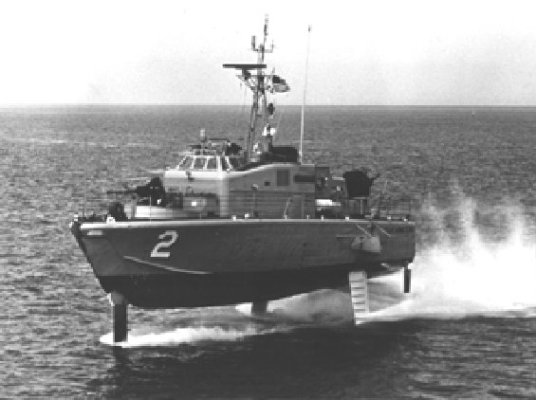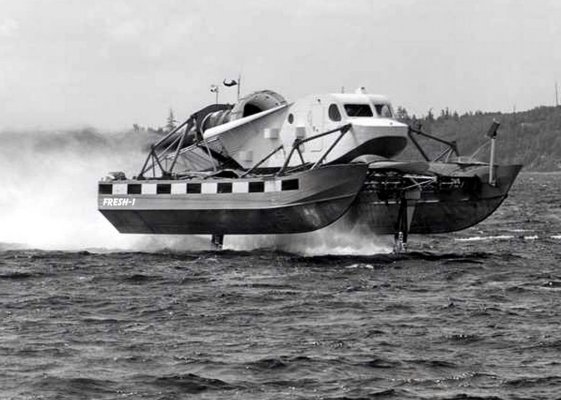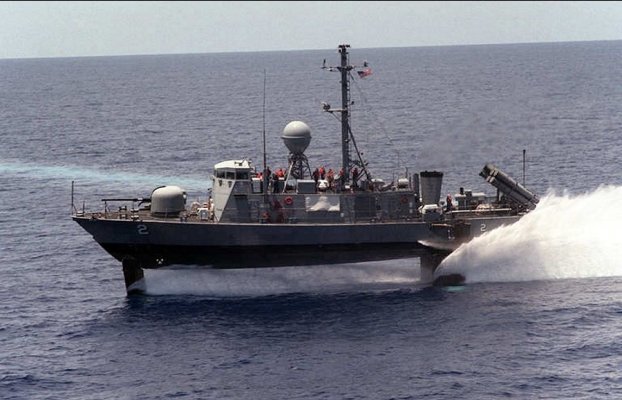The small hydrofoil shown in an earlier post reminded me of Boeing's foray into the hydrofoil business. The company's Marine Systems operated out of the Renton Plant next to the 737 line. In addition to a commercial passenger hydrofoil, the Jetfoil, Boeing also made a number of vessels for the US Navy. Some were for research purposes and some were commissioned warships.
First picture is the USS Tucumcari, a jet-powered hydrofoil gunboat. It saw service in Viet Nam for awhile.
Second shot is the FRESH-1, a research vessel designed to test hydrofoils at high speeds. The Navy's goal was a 100+ knot hydrofoil and the FRESH-1 was one of the boats built to test the concept. For power, it had what in essence was a 727 engine strapped to the top.
Third shot is one of the six PHM missile firgates Boeing designed and built for the Navy. The prototype, the USS Pegasus, was built and delivered in the late 1970s but the other five were completed and lined up side by side awaiting delivery inside the Renton assembly building when I hired into the company.
While Boeing Marine Systems had a pretty long run starting back in the 1960s, it ultimately proved to be a losing proposition and the division was disbanded and the building it occupied was remodeled to house the assembly line for the 757.
Boeing built a small number of commercial hydrofoils, too, in the same space as the military boats. They were sold to operators in Hong Kong, Hawaii, Indonesia, and (I believe) Belgium. The only operation deemed truly successful was in Hong Kong where they still run today between Hong Kong and Macau.
I used the last civilian hydrofoil in a staged interception of a drug-running boat in the middle of the Strait of Juan de Fuca for a marketing film I produced for the SLAMMR (Side Looking Airborne Multi Mission Radar), a 737 coastal patrol airdraft we made in the mid-1980s. The drug-running boat was a beautful Bertram sport-fisherman that Boeing Marine Systems used as a chase boat. The SLAMMR found the boat and then directed the "good guys" (the hydrofoil) out from Port Angeles to intercept it. The last shot was the hydrofoil running down the Betram as the SLAMMR made a pass over both of them at an altitude of 50 feet, all shot from a helicopter.
Before moving to Seattle I worked in commercial television in Honolulu, where one of our clients for TV commercials was Seaflight, the short-lived operator of three Boeing hydrofoils. So I'd shot with the boats over there, too.

